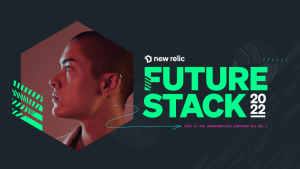소프트웨어 아키텍처와 서비스가 점점 더 복잡해지면서, 데브옵스 팀이나 IT 팀은 물론 서비스 관리 팀에게도 가시성 부족과 격리된 여러 툴이 골칫거리로 떠올랐습니다. 도구와 시스템 전반에서 인사이트가 연결되어 있지 않으면, 문제 해결에 필요한 데이터를 찾아 전체 맥락을 연결하는 일에 많은 시간이 소요됩니다. 이로 인해 어디가 성능 병목이 일어나는지 파악하기가 어렵고, 특히 운영 중단과 고객 불만족으로 이어지는 중대한 인시던트가 지속적으로 발생하는 데도 문제를 해결할 수 없거나 오래 걸리는 경우가 많습니다.
이를 해결하기 위해 뉴렐릭이 Jira Service Management의Atlassian Rovo 운영을 위한 에이전틱 통합을 출시했습니다. 이제, 서비스 관리, 데브옵스, IT 팀은 Jira Service Management에 뉴렐릭 AI로 지원되는 에이전틱 워크플로우와 지능형 옵저버빌리티 인사이트를 통합하여 신속하게 인시던트를 해결할 수 있게 되었습니다.
Atlassian과 뉴렐릭의 에이전틱 통합이 어떻게 서비스 관리, 데브옵스, IT 팀이 인시던트를 더 신속하게 해결할 수 있도록 지원하는지 알아보겠습니다.
- 인시던트 해결을 지원하는 문맥적 성능 데이터: ITSM, 모니터링 툴, 옵저버빌리티 플랫폼 전반에 분산되어 있는 데이터가 아니라, 뉴렐릭의 텔레메트리 데이터와 변경 워크플로우가 Rovo 운영 에이전트로 직접 전달됩니다. 이 덕분에 서비스 에이전트는 여러 툴 간에 문맥을 전환하지 않고도 최근 수정된 커밋을 비롯해 이상 징후와 인시던트를 신속하게 감지할 수 있습니다.
- 과거의 인시던트 데이터에 기반한 AI의 해결책 제안: Rovo 운영 워크플로우 내에서 생성되는 옵저버빌리티 인사이트와 지능형 작업 (예: 커밋 검증을 위한 서비스 소유자의 루핑)으로 평균 해결 시간(MTTR)을 단축할 수 있습니다.
- 자동화된 사후 검토 생성 및 학습: 인시던트가 해결된 후 Rovo Ops 에이전트는 뉴렐릭의 지능형 옵저버빌리티 데이터와 인사이트를 가져와 사후 검토(PIR) 보고서를 자동으로 생성함으로써, 서비스 에이전트가 인시던트 대응 및 예방 전략을 보다 효율적으로 운영할 수 있도록 합니다.
또한 이 통합은 복잡한 개발이나 맞춤화가 필요하지 않도록 설계되었습니다.
서비스 관리 팀은 평균 인시던트 해결 시간을 단축하여 고객 만족도를 높이고 운영 효율성을 향상할 수 있습니다.
Jira Service Management의 Atlassian Rovo Ops와 뉴렐릭의 에이전틱 통합
운영과 서비스 관리 모두에 대해 에이전틱 AI를 도입하는 기업이 늘고 있습니다. 2024년 12월 Forrester가 발표한 연구 조사에 따르면, Jira Service Management에서 AI 및 자동화 기능을 완전히 활용하는 IT 운영 팀은 인시던트당 평균 55분을 절약할 수 있습니다. 이러한 절약 효과는 운영 효율성으로 가는 명확한 경로를 보여줍니다.
JIRA Service Management에 바로 지능형 옵저버빌리티와 에이전틱 워크플로우를 통합하면, 문맥을 전환할 필요가 없고 실행 가능한 인사이트를 확보하여 수고를 덜고 협업을 개선하며 인시던트 해결을 가속화할 수 있습니다.
시작하는 방법
Atlassian-뉴렐릭 에이전트 통합은 현재 제한된 프리뷰 버전으로 제공됩니다. MTTR을 단축하시려면 지금 바로 프리뷰를 신청하시기 바랍니다.
아직 뉴렐릭 계정이 없으신가요? 무료 계정을 신청하시면, 100GB/월 무료 데이터 수집, 무료 기본 사용자 무제한, 뉴렐릭의 Cloud Cost Intelligence 모니터링 프리뷰를 즉시 활용할 수 있습니다. 별도의 청구 툴 없이 지금 바로 클라우드 컴퓨팅 플랫폼과 쿠버네티스 비용을 최적화하세요.
이 블로그에 표현된 견해는 저자의 견해이며 반드시 New Relic의 견해를 반영하는 것은 아닙니다. 저자가 제공하는 모든 솔루션은 환경에 따라 다르며 New Relic에서 제공하는 상용 솔루션이나 지원의 일부가 아닙니다. 이 블로그 게시물과 관련된 질문 및 지원이 필요한 경우 Explorers Hub(discuss.newrelic.com)에서만 참여하십시오. 이 블로그에는 타사 사이트의 콘텐츠에 대한 링크가 포함될 수 있습니다. 이러한 링크를 제공함으로써 New Relic은 해당 사이트에서 사용할 수 있는 정보, 보기 또는 제품을 채택, 보증, 승인 또는 보증하지 않습니다.




